
Leveling your yard can help with drainage and prevent damage to your home. Learn the cost to level a yard and what factors can affect the price.
The kind of yard that makes your neighbors jealous doesn’t have to take a lot of work


Anyone who’s ever lived in a home with outdoor space knows that a lot of the maintenance happens in the yard. Some of the best local landscapers even recommend mowing your lawn once a week during the growing season (with an average lawn mowing cost of $50 to $210 a pop). Things add up, especially in the spring and summer.
Luckily, you don’t have to put in a lot of effort to have a gorgeous yard. These low-maintenance landscaping ideas will save you time, water, and energy, so you can spend your weekend doing anything else.

Want a gorgeous backyard that stays green year-round? Say hello to artificial grass. Artificial grass, also known as turf, has come a long way since its invention in the 1960s. It’s less mini-golf putting green and more perfectly manicured landscaping. Since you don’t need to water plastic, it’ll also slash your home’s watering bills.
Even better, the cost of artificial grass is often a one-and-done deal and requires very little ongoing upkeep in the way that traditional grass would. Artificial grass maintenance can add up for pet owners who occasionally dirty the turf, but it beats weekly watering. Steve DiFabio, who owns the Phoenix-based cleaning service Dirty Turf, recommends spot-cleaning your grass with an antimicrobial deodorizing spray, along with occasional deep cleanings.
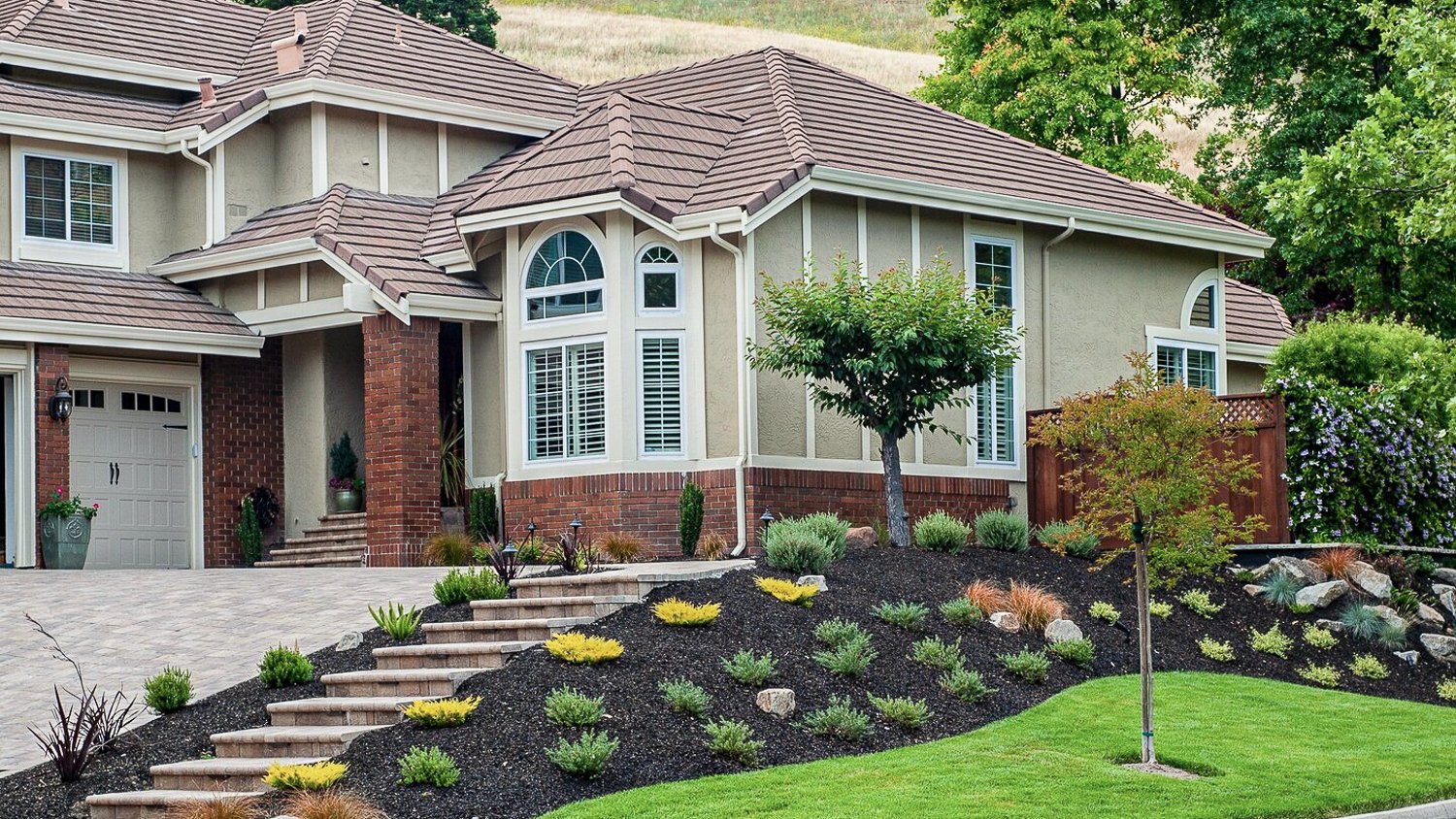
One of the quickest ways to end up with a landscaping headache is to garden on a slope without a plan. Cut down on irrigation and overall yard maintenance by planning ahead for the hill. Opt for mulch and ground cover plants with dense, widespread roots that hang on to the soil and distribute water more evenly. Remember to work with a professional hardscape pro when installing your surrounding patio and driveway as well. Keep water from flooding into your garden by sloping the stones toward the closest drain or by opting for permeable pavers.
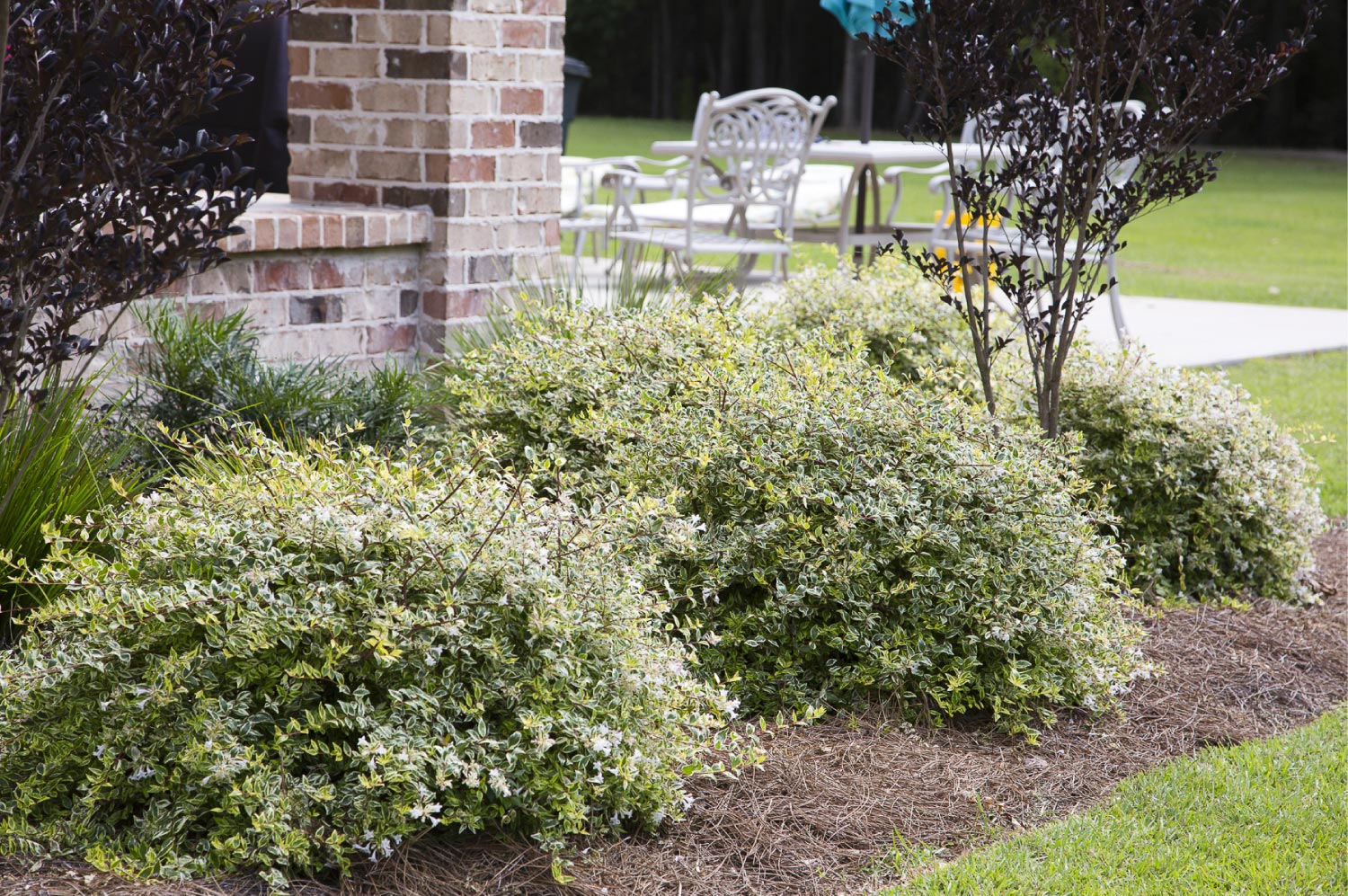
Unlike annuals, perennial plants are a simple landscaping idea that never goes out of style. Literally, they come back each spring—which means you won’t have to redo this landscaping project—as long as you choose the right plant for your plant hardiness zone. For example, something like a gardenia may act like an annual in a cold-weather climate.
Kip McConnell, director of Southern Living Plant Collection, recommends abelia for its long flowering season and low water requirements. Abelia is a low-maintenance plant that doesn’t require a lot of water and can withstand temperatures that dip below freezing. In zones 5 or 6 (the northern United States), the stems might die back during the colder months, but don’t worry. The flowers will return.
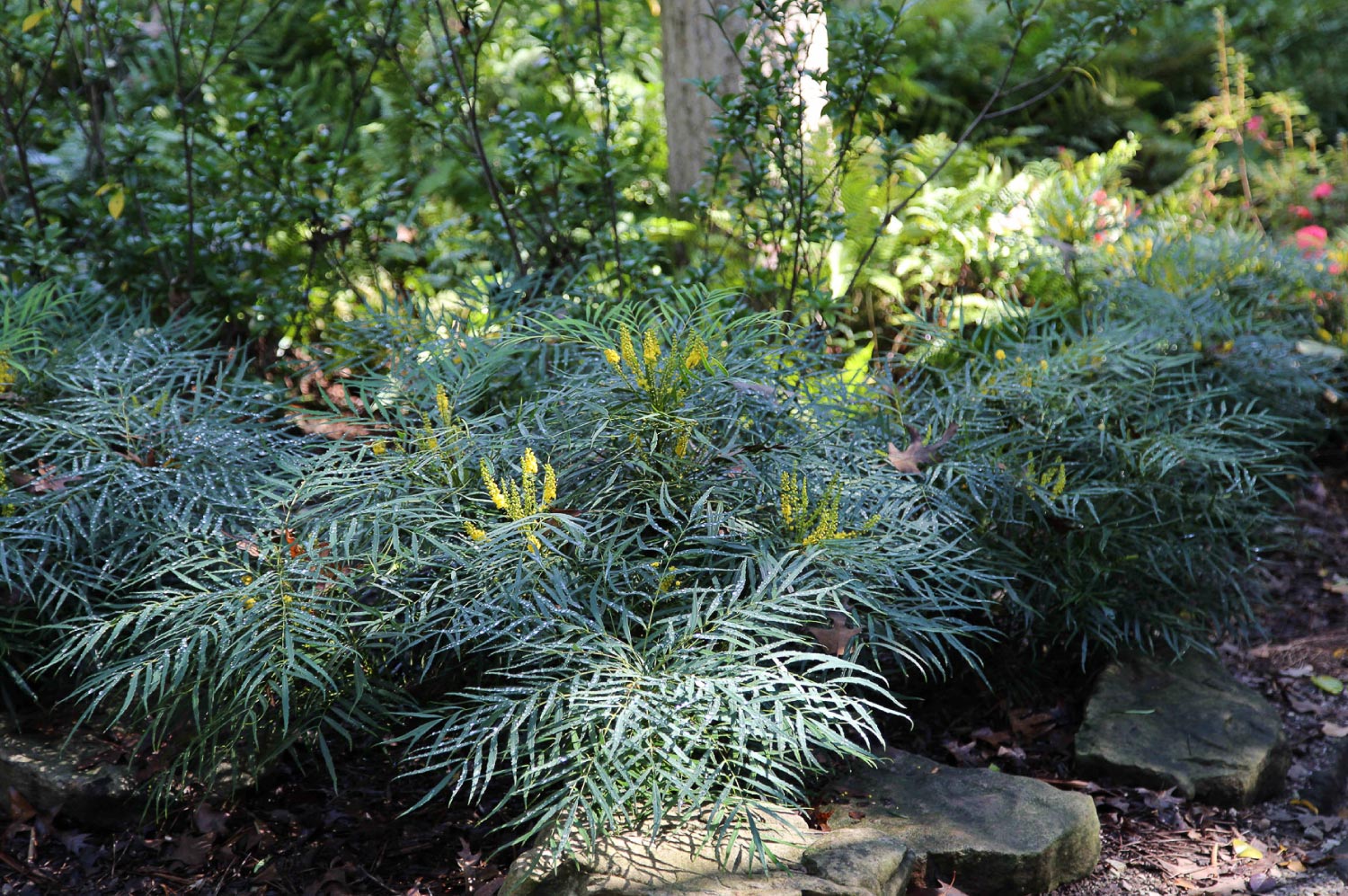
A little texture can transform your yard, but it doesn’t have to involve planting loads of different flowers. Low-maintenance bushes and shrubs can have a major impact, especially when layered with ground cover plants like alpine strawberries or creeping thyme. Shrubs like these significantly cut down on landscape costs for tasks such as trimming unruly hedges.
McConnell suggests soft caress mahonia for its unique texture and ease. “Fine-textured foliage makes it look like a fern or palm, and sprays of yellow blossoms in fall bring a thrilling pop of late-season color,” he says. Other low-maintenance shrubs include hydrangea, bottlebrush buckeye, beautyberry, and goldthread cypress (but always check what works best with your zone).
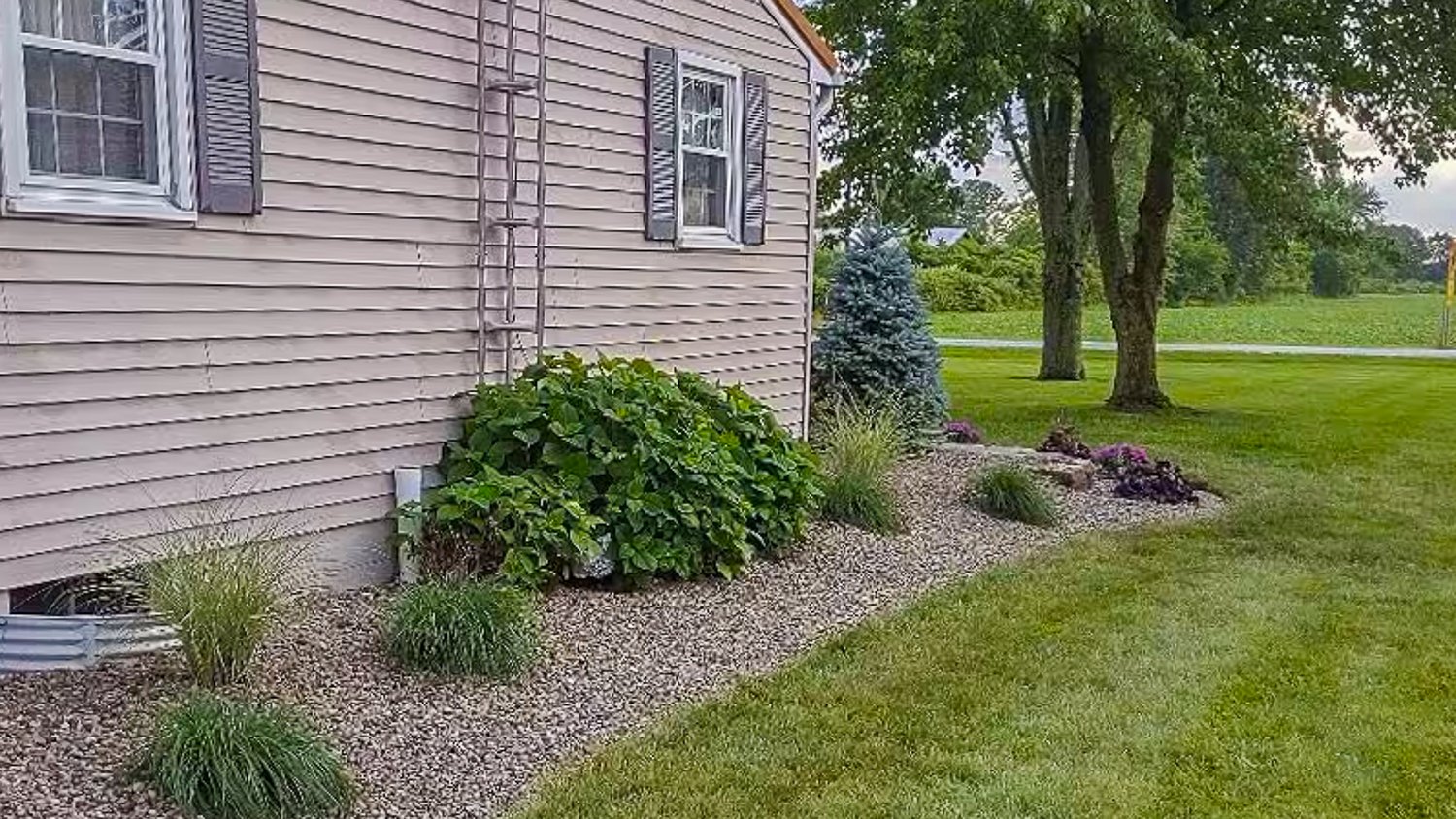
Investing in the cost of professional landscape design can reveal some of the most clever and practical ideas for lowering garden maintenance. Skip the lush flower garden along the edge of your home by opting for inorganic mulch that assists with water drainage. Not only does this fall into the low-maintenance category for keeping your garden soil in place, but it also protects your foundation from a buildup of water pressing up against it and potentially leading to mold or damage.

Not every garden needs a lot of water to stay lush. Drought-resistant (or drought-tolerant) plants are a landscaping idea able to withstand large periods without water. The first thing that might come to mind is your average succulent, but this type of low-maintenance plant can include flowers and shrubs. Justin Hancock, who runs Costa Farms in Miami, Florida, recommends the perennials gaillardia, gaura, lavender, or Russian sage.
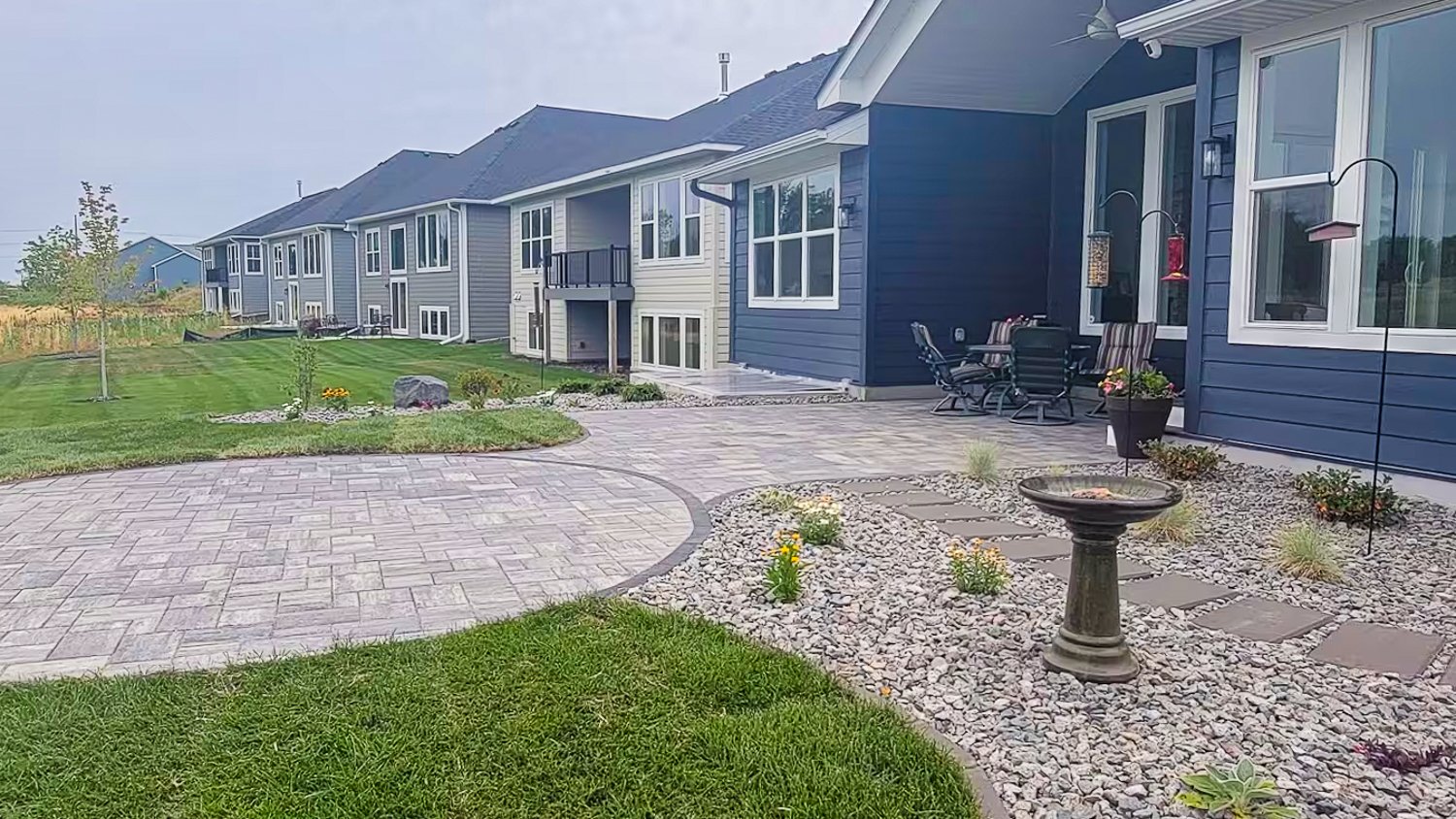
Consider expanding hardscaping and stonework to more than one area of your landscape design. Keep the backyard low maintenance and open to a range of uses by considering all types of landscape stones. Pavers pair well with natural stone walkways surrounded by delicate river rocks that host several drought-friendly plants. Add a water feature to the center of the design, from a fountain to something as simple as a birdbath. Not only does this cut down on weekend lawn mowing, but it also opens up a new space for hosting the next barbecue or adding a firepit.

Simply put, native plants are plants that grow naturally in your climate. Think the succulents in California gardens or the violets that grow wild in New Jersey farmland. These plants will naturally thrive without constant maintenance. In addition to ease, native plants actually help the environment. According to the Audubon Society, these plants provide nectar for pollinators like hummingbirds, bees, and butterflies, along with essential food for local wildlife.
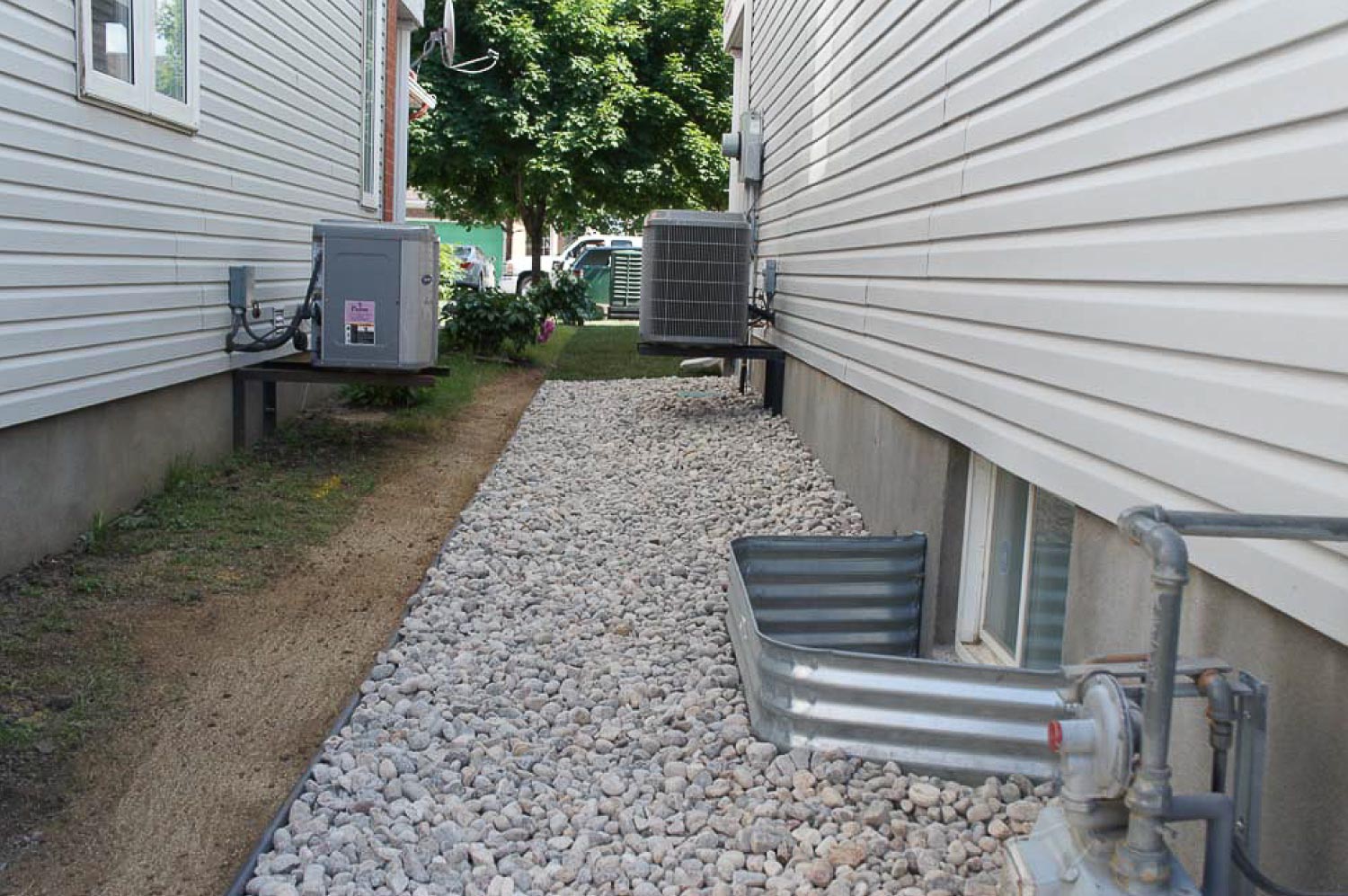
River rocks are a great low-maintenance landscaping idea for a couple of reasons. First, they require almost no effort beyond the initial installation and occasional weed control. Second, they help prevent water damage and erosion, particularly if you live on a hill or an area with heavy runoff.
Terry Fraser, owner of Renco Home Improvements in Ottawa, Canada, says this landscape idea is ideal around your home’s foundation because it prevents water damage. Just be aware that river rocks absorb heat from the sun, which can overwhelm some types of plants.
Or enjoy the best of both worlds. “If you like the look of the traditional grass lawn in your front yard, but want something lower maintenance in your backyard, keep the grass in your front and install a rock garden in your backyard,” says Rupa Mehta, Angi outdoor home expert.

Landscape edging is a clever method of framing each part of your landscape and keeping it separate from the lawn. Line your new garden with natural stone, brick, wood, or even concrete to keep the transition looking neat. Adding the solid edge will cut down on the endless maintenance of trimming your lawn at the side of your garden. It can even cut down on weeds from infiltrating your flower beds.
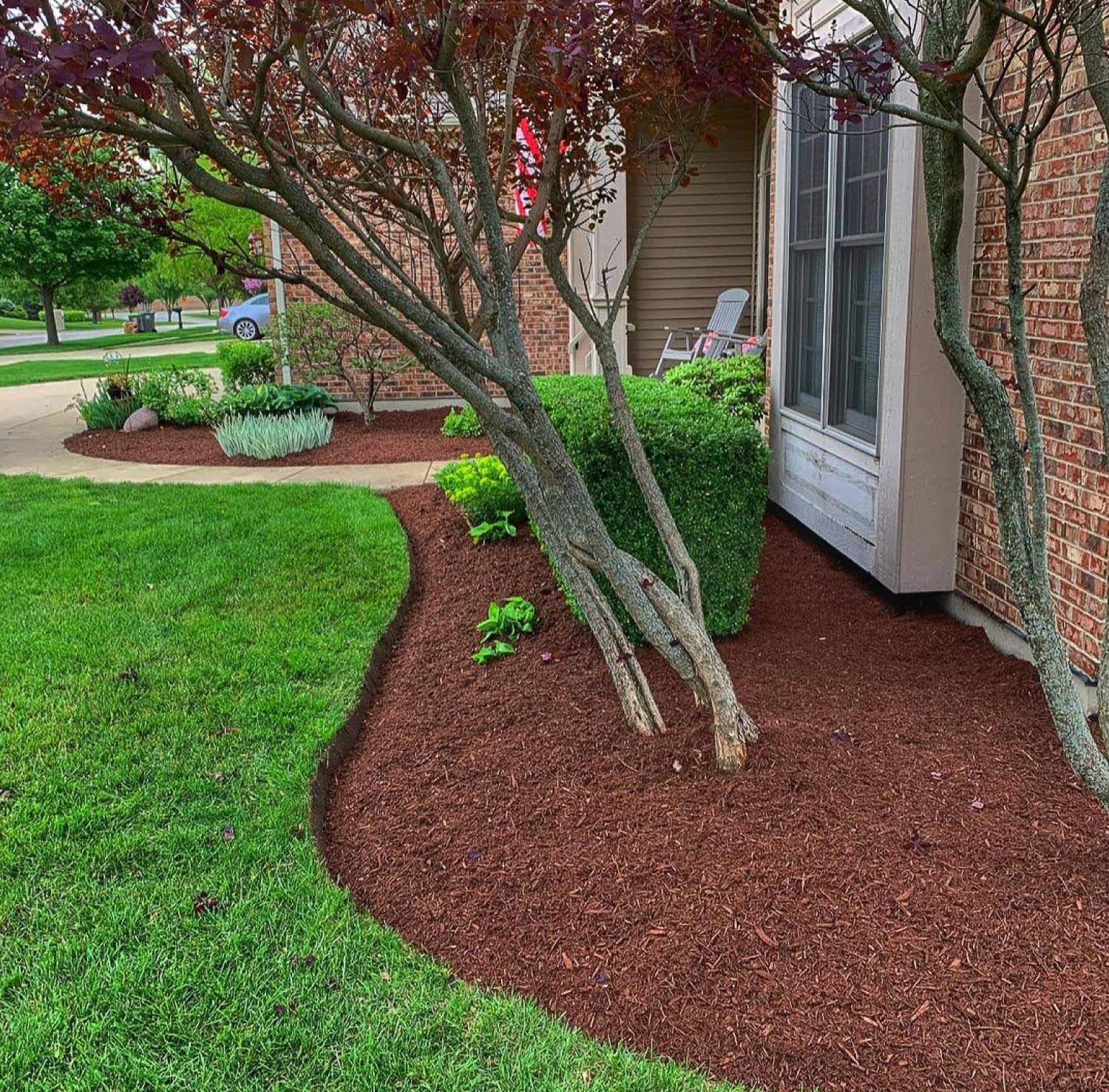
The best kind of mulch for your yard doesn’t just make your landscaping look put together. It improves the soil, providing nutrients to plants and insulating their roots. Unfortunately, it does get discolored and break down over time. That’s how it feeds your flowers and ornamental grass. To keep your garden looking fresh, you’ll have to replace your mulch periodically, but that’s just about all the maintenance it needs.
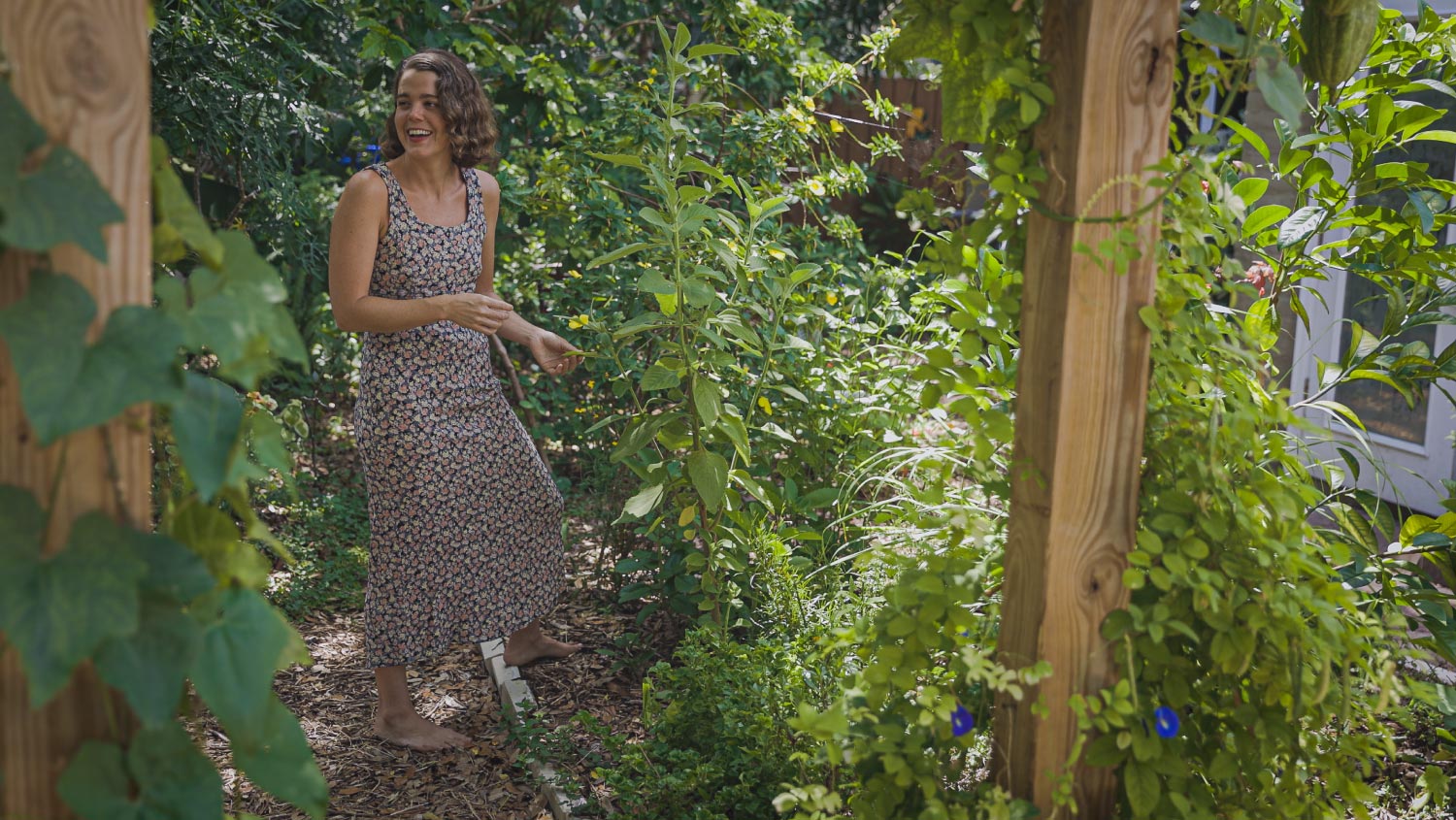
A forest garden is one of the few low-maintenance landscaping ideas that thrive on neglect and still ends up looking magical. Justin West, CEO of Thrive Lot, recommends starting with a tree and layering smaller shrubs and herbaceous plants around it. “As the forest grows, the plants can fill themselves in for a lush, jungle aesthetic, which doesn't require mowing, watering, or any other maintenance,” says West. To get the best results, create a garden using native plants.
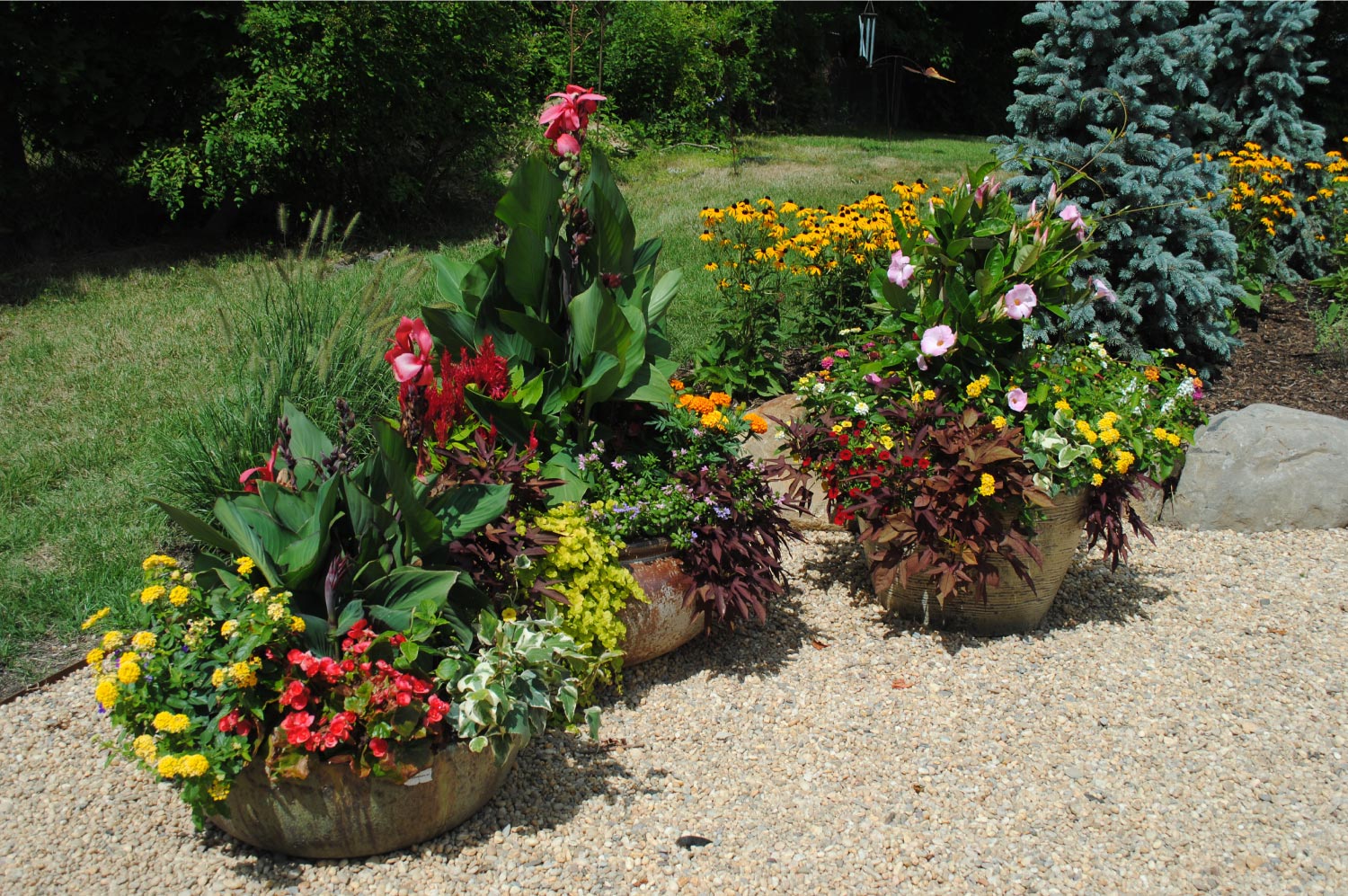
If you don’t want to spend your time cutting back overgrown flowers and shrubs, a few well-placed pots are a low-maintenance option with a big impact. Fill your pots with outdoor plants that are hard to kill, like ornamental grass or wild geranium. It’s also important to factor in how your plants will grow.
According to certified nursery pro Karen Musgrave, who works with Hicks Nurseries in Long Island, each pot should have a thriller, filler, and spiller. “A ‘thriller’ plant is a strong focal point,” she says. “A ‘filler’ covers most of the soil in the pot, and a ‘spiller’ weeps over the edge of the pot.”
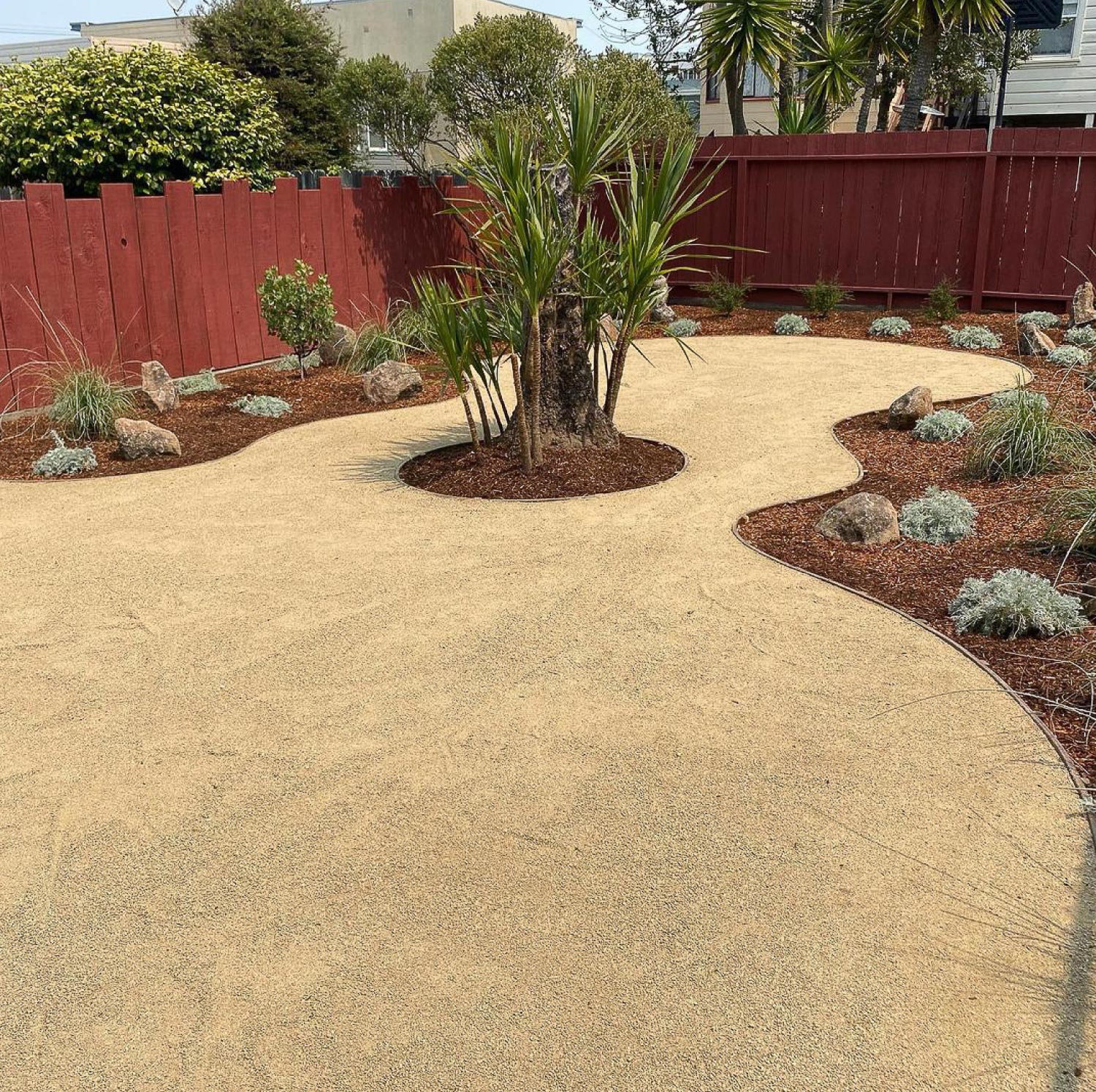
Who said your landscaping needs grass at all? Decomposed granite is popular for paths, walkways, and driveways, but it’s also a great ground cover for xeriscaping (or irrigation-free) gardens. You can also use it alongside drought-resistant plants like succulents and certain ornamental grasses because it’s similar to mulch. It acts as a fertilizer while it wears down.
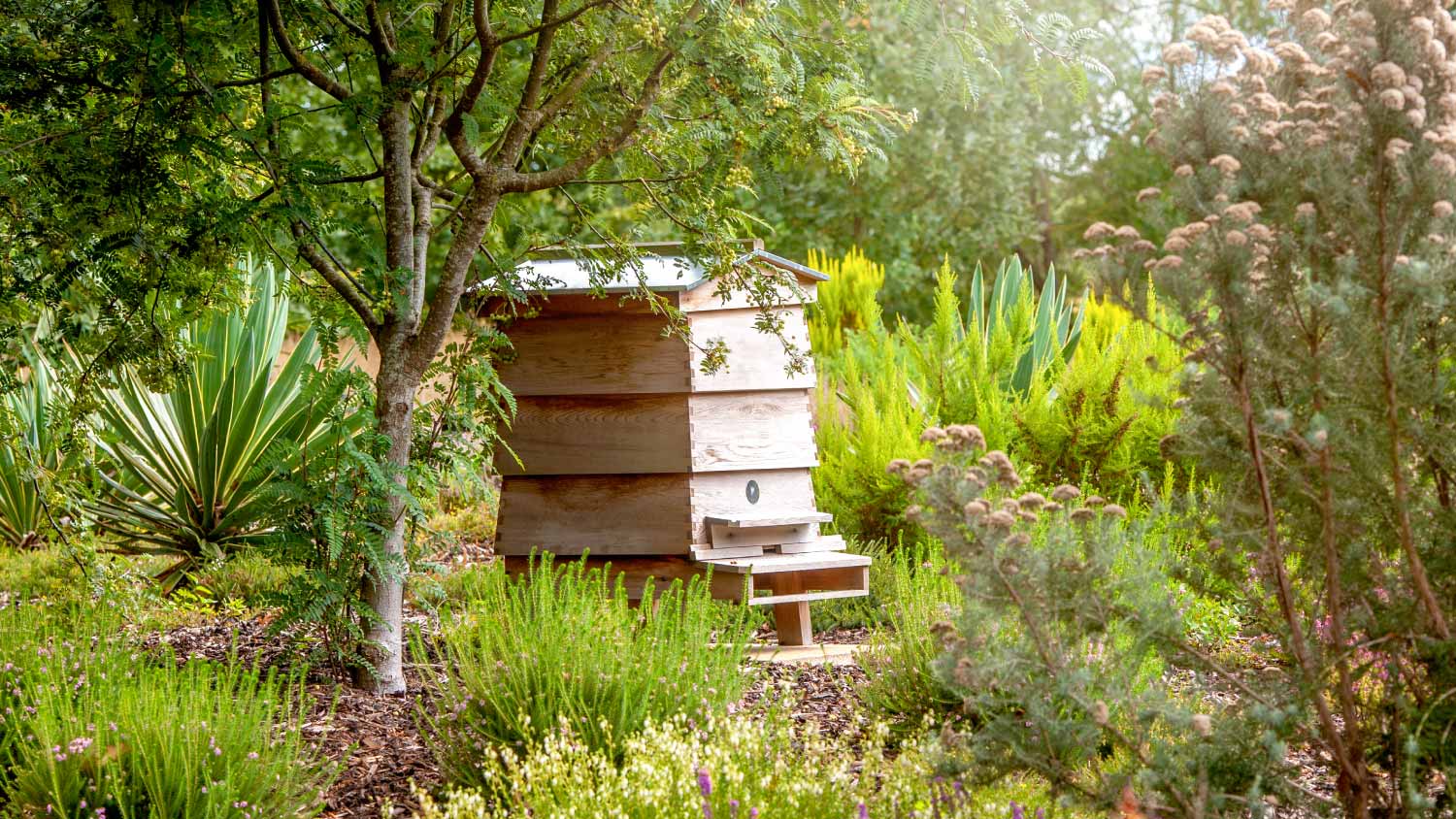
Welcome all the local birds and beneficial bugs as well by designing your garden for pollinators. Opt for native plants you can plant in clusters that provide shelter and an easy buffet setup for bees and butterflies. It's also important to choose a selection of plants that deter pests so you can avoid chemical pest control. Chat with your garden center about the best local plants that attract these eco-boosting creatures.
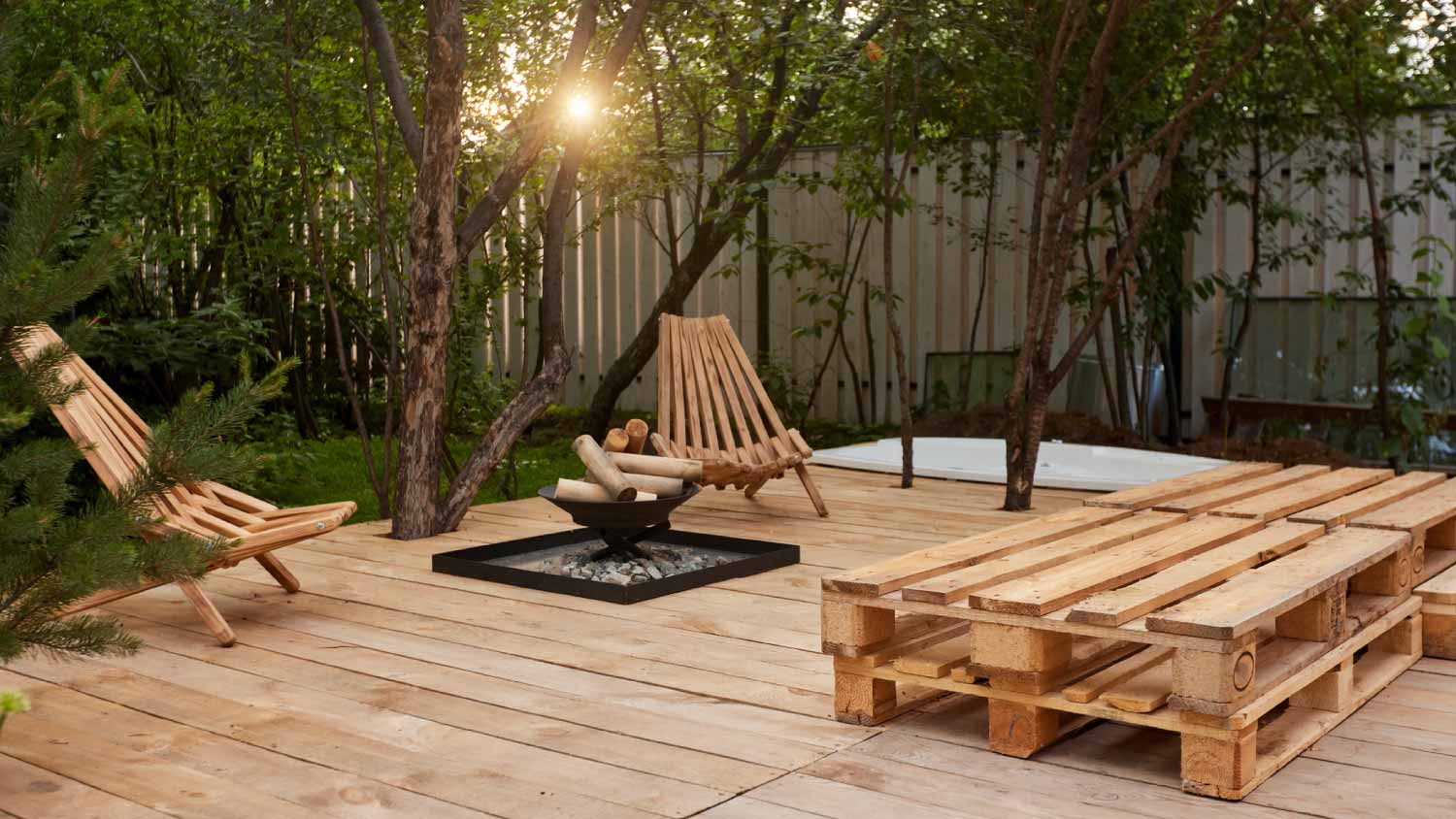
The cost to build a deck is much higher than simply adding ground cover plants, but the results are equally as impactful. Building a deck expands your backyard's livable space and can even raise your home's property value. It also covers up the land below without having to excavate for a stone patio. What's more, you don't need to ignore the current style and structure of your landscape to add a great porch. Leave room for trees, water features, and plenty of space for a veggie garden.
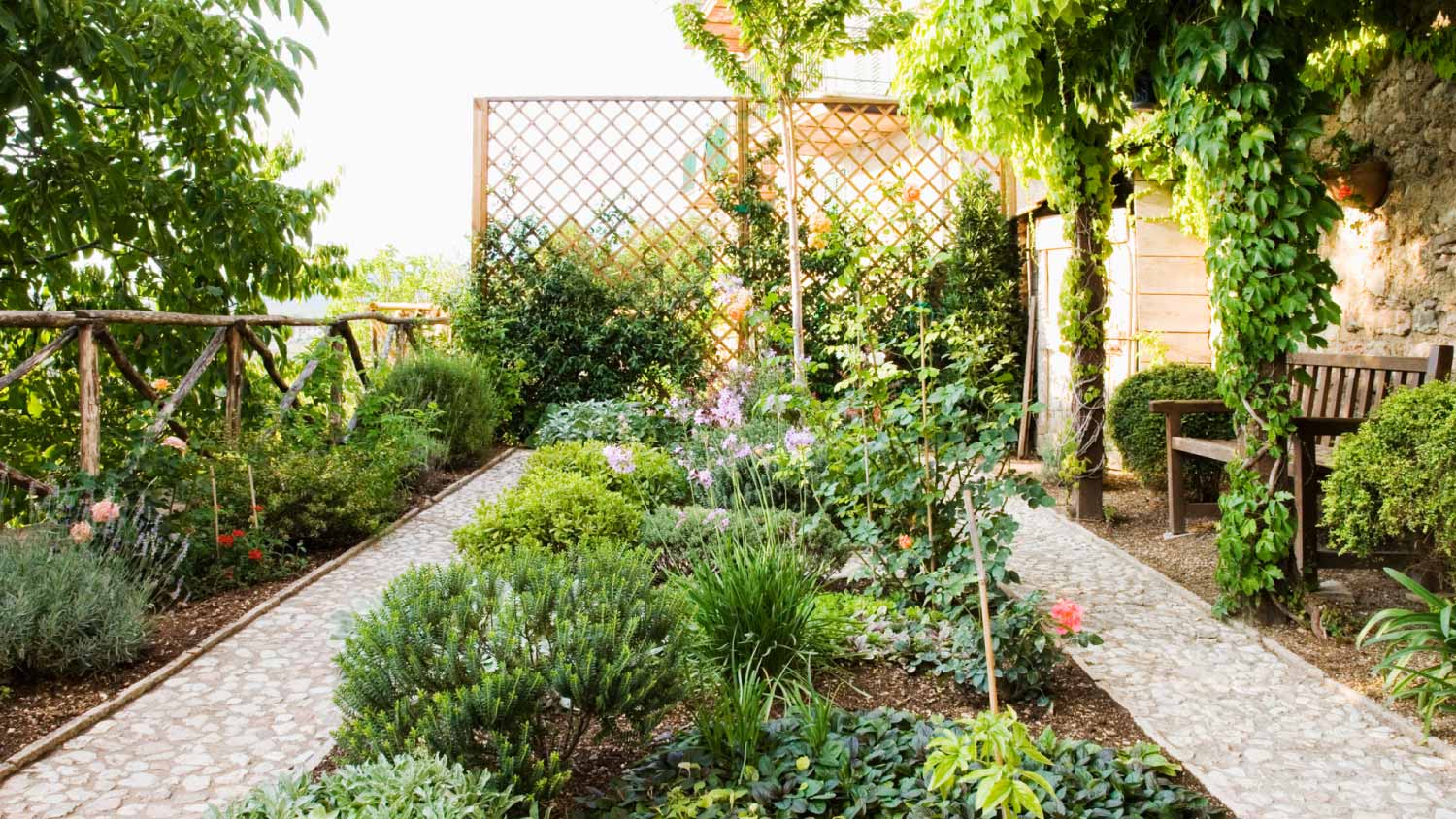
If you're an avid gardener but have no patience for an ever-growing lawn of grass, consider skipping the turf altogether. Combine hardscaping with a veggie or flower garden that changes with the seasons. The plants will all serve a purpose and you won't have to waste a lot of water on thirsty grass. You can still make way for plenty of room to lounge and take in your garden, even without the open lawn space.
If you want to make your lawn or garden look stunning without investing much time or money, consider adding some art pieces. Garden fountains, birdbaths, colorful orbs, and wind spinners add aesthetic nuances to your garden or yard and rarely need maintenance. Plus, if you’re looking to attract birds to your yard, flowing water is practically a bird magnet. Sit back on your porch and enjoy the sounds (and views) that this art will bring. And if you live in a state that gets severe weather during the winter, remember to bring your art pieces inside to protect them.
From average costs to expert advice, get all the answers you need to get your job done.

Leveling your yard can help with drainage and prevent damage to your home. Learn the cost to level a yard and what factors can affect the price.

Leveling your yard can help with drainage and prevent damage to your home. Learn the cost to level a yard in Columbus, OH, and what factors can affect the price.

The cost to remove a boulder depends on the size, location, and equipment needed. Learn the average boulder removal cost and how to save money on removal.
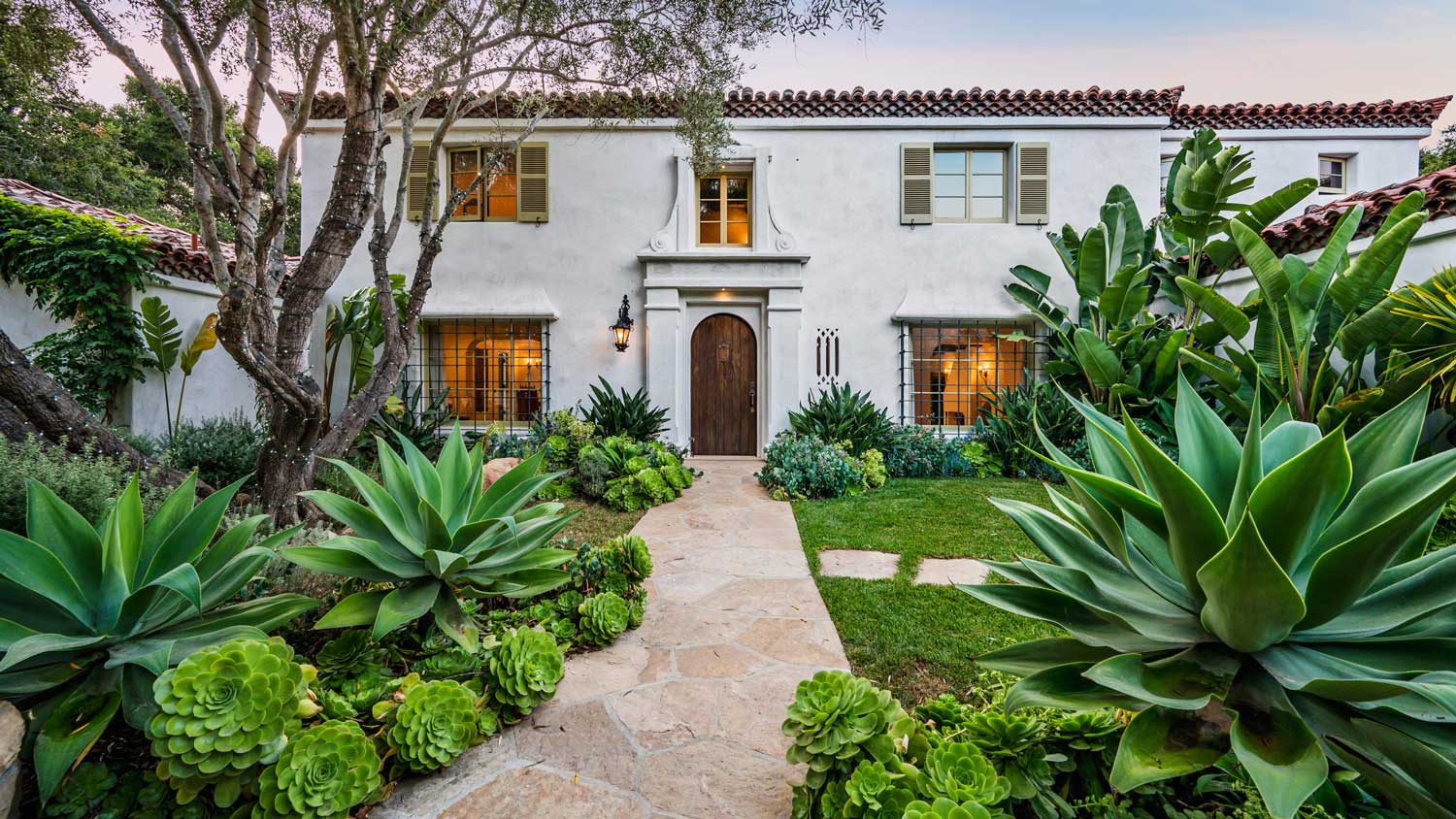
What is the name of someone who designs landscaping? A landscape architect creates stunning, functional outdoor spaces with expert design skills.

What is a privet hedge and why should you consider it for your backyard? Use this guide to consider the pros and cons along with upkeep and maintenance tips.
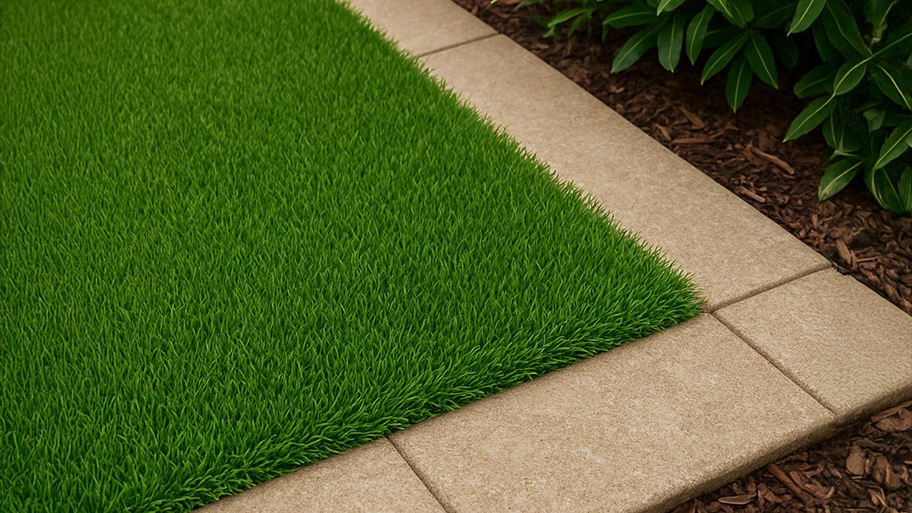
Opting for a natural turf alternative may have its perks, but the problems with artificial grass can outweigh the good. Get to know these common issues before installing.